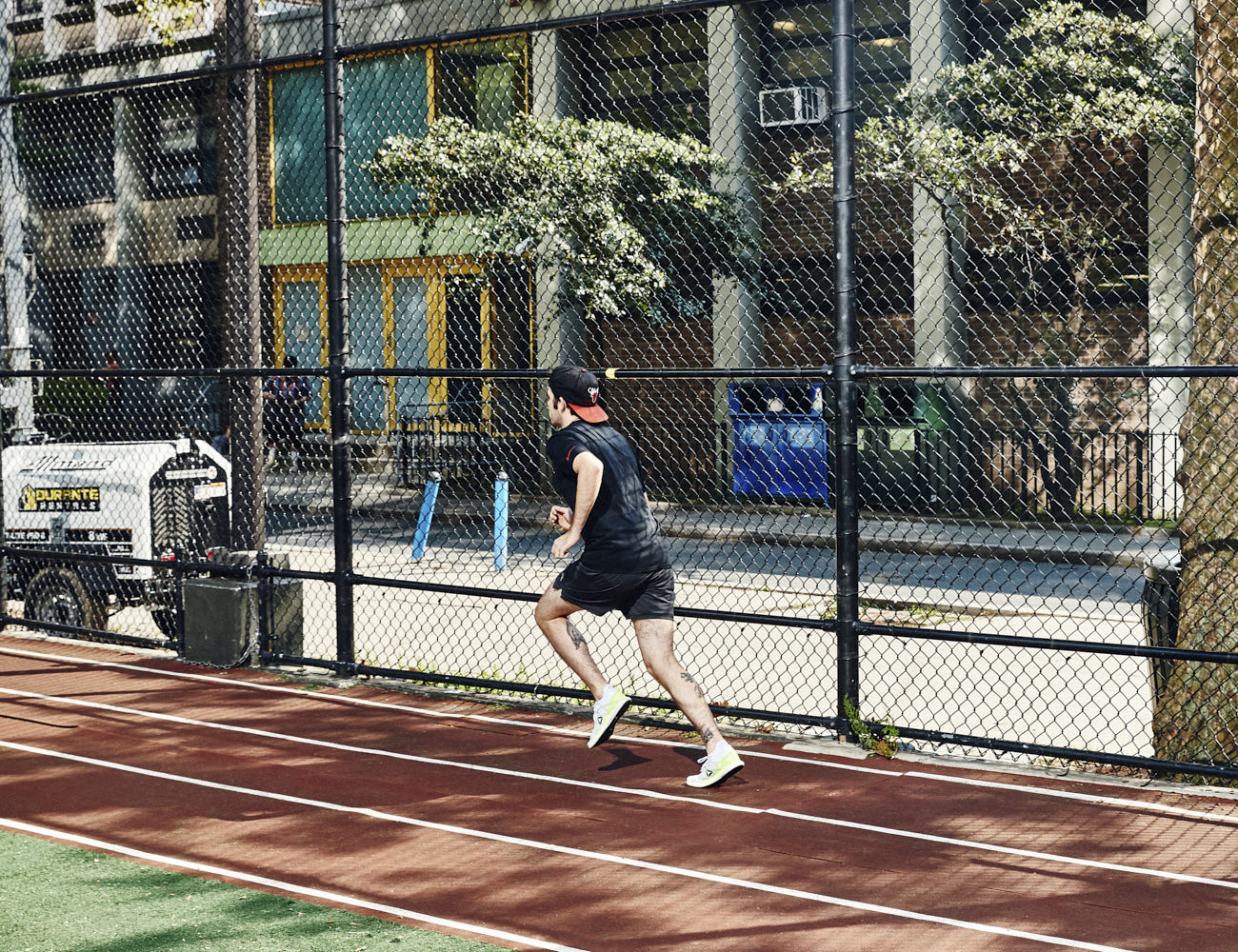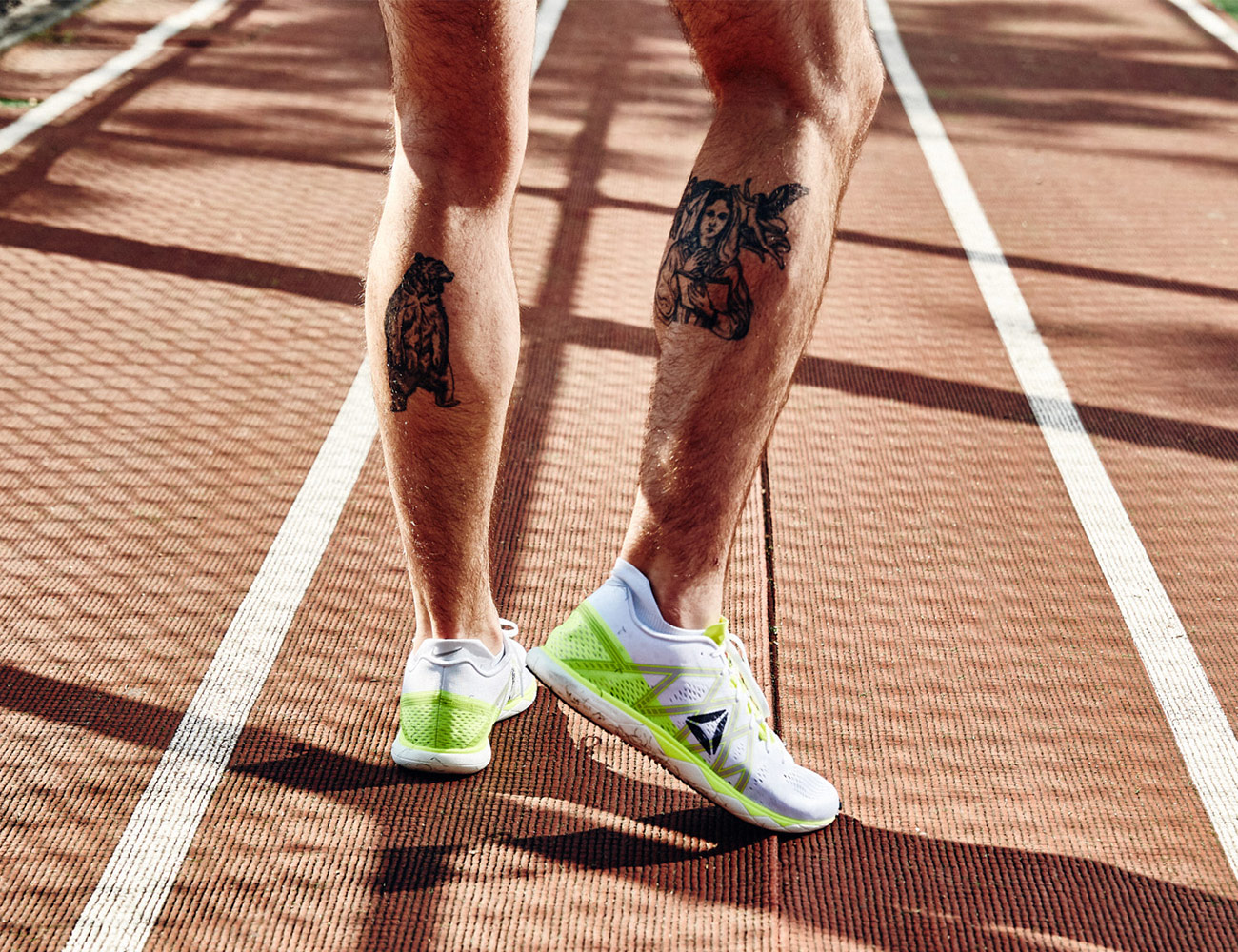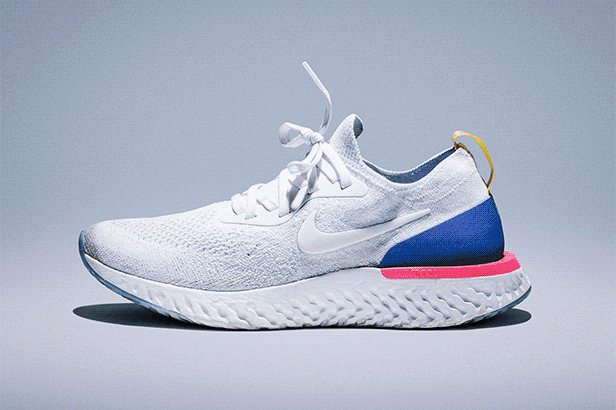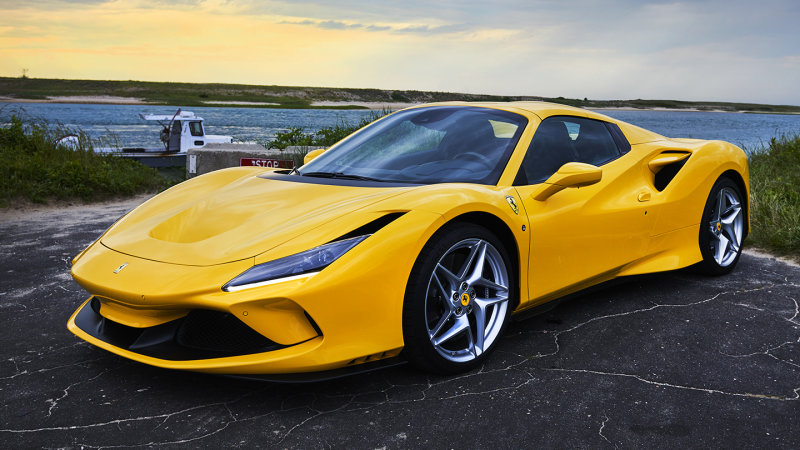The lightest-weight race day sneaker on the market is Reebok Floatride Run Fast Pro. It’s just 3.5 ounces — less than your iPhone. A high traction outsole, that looks a bit like little spikes, feels fast and grippy whether you’re on the track or road. Pick these up for your next 5K or 10K and get ready for a PR.
The Good: The biggest story with these shoes is that the FloatRide Run Fast Pro weighs less than your race day kit. “If you take shorts and a singlet, which is what most people race in, and put that on the scale, those two things weigh more than 100 grams,” Paul Astorino, senior director of specialized footwear at Reebok, says. 100 grams is equivalent to 3.52 ounces, just about what the shoe weighs. The upper is lightweight and breathable, and the Float foam is soft where you need it and firm enough to handle at least three marathons. The shoe isn’t made on a track spike last, but the unique-looking outsole definitely reminds me of track spikes — and they function similarly to grip in wet or damp conditions.
Who They’re For: While the brand says they are for anyone looking to run up to a marathon distance, I’d recommend you pick these up for your mile race, speedy track days and distances up to a half marathon.
Watch Out For: You’ve got about 100 miles of racing in this shoe. So if you’re wearing them for your three-mile tempo run twice a week, you’re going to rip through those miles relatively quickly. The point of shoes like these is to wear them on race day — that way you’re getting the most bang for your buck. The $250 price tag is pretty steep, no matter how you slice up those 100 miles. The Nike 4% are just as pricey (albeit hard to find), but if you want a shoe that’ll hold up to more than a handful of races (depending on your distance regiment) it’s worth looking into the Reebok FloatRide Run Fast — made with the same foam, but a different upper.
Alternatives: The most natural comparison is to the Nike 4% ($250) or the FloatRide Run Fast (at a slightly lower price point, but still lightweight; $140) or the New Balance 1400 ($100). Basically, any shoe that is advertised as a racing flat is a competitor to the Pro.
Review: When I unboxed the Pros, I was shocked at how lightweight they are. They feel paper-light. The sizing was spot on — for a racing flat I like the fit to be snug. Since I don’t have to worry about my feet swelling to the extent that they would for a half or full marathon distance, the slim fit is like a cocoon for fast days. However, there is also enough room for me to wear whatever socks I’m feeling that day.

When I first put them on, I was impressed with how comfortable my feet were. While the lack of heft around my feet reminded me of my spike-wearing track days in high school, there was still some support from the Float foam midsole. The issue many sneaker manufacturers run into is that it’s hard to make a cushioned and lightweight sneaker as one usually cancels out the other. The Pebax material is the game-changer. It has a lower density than other materials typically found in a midsole, like EVA, so it’s lighter, more flexible and impact-resistant — your first footfall feels the same as your finish line sprint. It’s got that high energy return feeling that every sneaker brand is chasing.
The FloatRide Run Fast Pro upper is all one piece and is exceptionally breathable. I wore them on a 90-degree day, and my feet felt free and breathable — largely due to a single-layer engineered mesh upper. I had no chafing issues — but I would recommend wearing socks. The tongue is attached to one side, so I had to play around with how much I could pull it over to the other side and make the top of my feet happy.
The nubby outsole is yet another unique piece of the Pro, and its design stems from “the chase for weight savings,” Astorino says. “Rubber is one of the heaviest compounds on the shoe.” The team at Reebok figured out how to glue little pods onto one piece (the outsole) and then stick that to the bottom of the shoe, so it’s just a .75 millimeter piece. “Each one of those little nubbies is a little piece of polyurethane molded together and popped on the bottom,” Astorino says. While it looks almost like a golf shoe, the spike-like PU pieces worked on every surface I tried from wet and dry roads, to wood slats, to concrete to grass.
After testing a lot of stability and trail shoes lately, I was very excited to take these for a couple of laps. First up was a speed workout with Mile High Track Club. We raced around Pier 25 stopping after each lap to mix it up with jumping jacks and burpees. The pavement was dashed with sand and dirt, and the outsole had no issues. Lateral movement was smooth as I weaved in and out of the pedestrians leisurely walking to the Grand Banks, an oyster bar on a boat docked at the end of the pier.

After some sprints, I was intrigued with how these would feel on a regular 5K run — nothing insanely fast, just a regular routine run. Another tester mentioned that the shoes crushed his calves during a three-mile tempo run, because of the lack of support — he enthusiastically endorsed them for speed workouts. I ran in the Pros on a hot and humid night where everything feels like it’s melting, including the bottom of your shoes and felt no difference underfoot. Often, shoes will feel slightly mushy after spending a lot of time in the heat, but this wasn’t an issue for the Pros. A couple of hill sprints during the run were no match for my fresh legs and speedy shoes. I felt sufficiently cushioned for a low key loop but did start to wonder how many miles I could put on the shoes before they wear out.
As I gear up for the Fifth Avenue Mile in early September, I’m going to keep these on the shelf until that day, but they’ve already convinced me. A lightweight track-spike-like sneaker is the right way to go.
Verdict: If you race miles and 5Ks, it’s worth taking a look at this sneaker. I’m planning to wear these for the upcoming Fifth Avenue Mile (in hopes of a speedier time). The $250 price tag is a bit steep, but unlike the Nike 4%, you can find these in stores and online. It’s worth checking out the FloatRide Run Fast that’s just $140 but has a similar outsole to the Pro. Competitive runners will appreciate the Pro’s spike-like sole and the paper-thin breathable upper. Just don’t wear these on your daily runs.
What Others Are Saying:
• “That is, until we get to the price. I obviously can’t tell you if it’s worth the $250 price of entry, but I imagine for most people it won’t be. To the Fast Pro’s credit – and to help justify the cost, certainly – the shoe does have some range. I’d be hesitant to recommend this for a marathon (though I may well try it), but any other distance is almost certainly a ‘go’ from me. Frankly, this is almost the perfect 5K/10K shoe, where I think the raw weight of the thing will get you to the finish faster than whatever propulsion system Nike’s baked into the Vaporfly. ” — Michael Ellenberger, Road Trail Run
Key Specs
Weight: 3.5 ounces
Heel Height: 15.5 mm
Forefoot Height: 12.5 mm
Heel-to-toe Drop: 3 mm
Reebok provided this product for testing purposes.
Hot takes and in-depth reviews on noteworthy, relevant and interesting products. Read the Story




